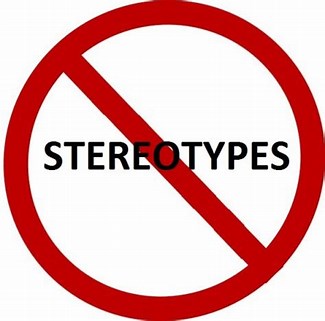Windows and Mirrors - So Now What? by Florence Sprague, February 2018
 While picking up a book after an LWVRA program at the Roseville branch of the Ramsey County Library, I spent a few minutes reading the two part messages posted on several tall wire frame display racks. Perhaps you saw this display, too. The messages were both touching and demoralizing. Touching because they revealed the hurts and insecurities of our teens and demoralizing because they continue to reflect just the type of stereotyping that we have been battling for years.
While picking up a book after an LWVRA program at the Roseville branch of the Ramsey County Library, I spent a few minutes reading the two part messages posted on several tall wire frame display racks. Perhaps you saw this display, too. The messages were both touching and demoralizing. Touching because they revealed the hurts and insecurities of our teens and demoralizing because they continue to reflect just the type of stereotyping that we have been battling for years.
The display consisted of roughly 3x5 inch pieces of paper with a pair of sentence starters which students at Roseville Area High School completed last year. The first prompt, “People think I am___________”, was followed by “The truth is that I am______________.” The messages were a part of a project led by RAHS student, Elizabeth Hansel and the Teens for Human Rights Club, which gathered 2000 completed messages. Bravo to Ms. Hansel and her club for confronting the issue of stereotyping. We are delighted that this thoughtful young woman is now a member of LWV Roseville Area, perhaps you have met her. Our paths have not yet crossed, but when they do I would love to hear more about this project.
Several questions were raised for me by this display which I continue to ponder. The first is the remarkable resilience of baseless stereotypes and put downs. Many of the most oft recurring stereotypes in the display involved gender or race/ethnicity. For example, several young women mentioned that they feel that people think they are dumb because they are blonde, while they know they are smart or even nerdy. Others had Latino students facing assumptions of lack of documentation even when they were citizens, or blacks having their political positions pigeonholed. All reflect a general failure of students to get to know one another and reject the crutch of generalities and stereotypes. This is a bit scary because students are thrown together day after day with more opportunities to get to know one another than might occur outside of a school, but they do not. Where and how do they continue to learn the stereotypes that these cards reflect?
Another question concerns how the writers have become aware of what “people think.” Are students, or people in the wider community, saying such things to them directly? Are they behaving in a way that reflects such attitudes? Is it old school media like television shows or commercials, or new school media like Facebook and Twitter? Is it very individual or are the student writers feeling this way because they more broadly believe that this is what society believes about people with a certain characteristic? Such painful revelations deserve exploration and a response.
Ms. Hansel is quoted in a Roseville Review article of September 12, 2017 [http://www.lillienews.com/articles/2017/09/12/roseville-high-schoolers-open-about-stereotypes] as recognizing that everyone runs into stereotypes at some point in life and seeking a positive project to which students could relate. The anonymous outpouring of feelings confirmed her assumption. Some of the writers sounded dismissive of those who stereotyped them, others sounded more deeply hurt, but we all know how vulnerable people are in their teen years. Now I am left wondering what happened next at RAHS? What sort of discussions did the club have when they saw the results of their project? Were there classroom discussions? How did the faculty and administration respond? Have there been next steps to help students reflect upon the stereotypes? To help students respond to them? To help students protect themselves from them? To help students to not pass them on to others?
And of course the last question I ponder is what we, the generations who passed on such stereotypes without adequately debunking them, need to do now to help these young people battle stereotypes and misconceptions? Some of the answers sound much simpler than they are-don’t spread jokes that are built on derogatory stereotypes, respectfully challenge them from others, listen to the stories of those you meet and don’t just categorize them quickly, notice advertisements that spread stereotypes and tell the company what you saw and felt, educate yourself about issues like mental health that can generate destructive stereotyping. These are some ways to not be part of the problem. How many more can you think of? Ms. Hansel and her classmates have reminded us all that the human tendency to generalize can all too quickly also be weaponized in the name of making oneself feel momentarily bigger or better than someone else. There are better ways to build self-esteem.
If you were handed a card with those two sentence starters (“People think I am…” and “The truth is that I am…”) how would you complete them? How might you have completed them at 16? How would you feel upon completing them? If our goal is empowerment and positive self-worth for all, it is clear that the solutions are not simple and not once and done. We need to set the tone- do not accept the thoughtless diminishment of groups. We need to support our youth as they explore the persistence of stereotypes and the damage they can do when not exposed. We all need to figure out what to do now to change what comes next.
